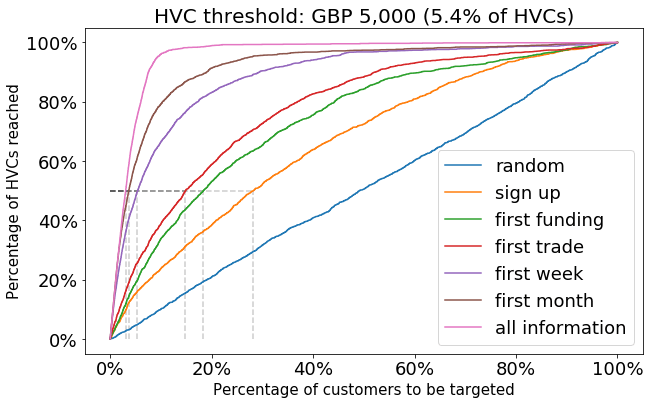Work
Targeting the most valuable customers for a financial services company

We predicted and identified the high-value customers for a financial services company, allowing the team to spend more marketing resources targeting and supporting them.
Customer
A FTSE 250 financial services company.
Problem
The company, which is a financial derivatives dealer, has annual revenues of hundreds of millions of pounds and tens of thousands of customers worldwide. One-fifth of its customers account for more than 90% of revenue and are as a result regarded as high-value customers. Spotting the customers who are likely to become high-value customers early allows the marketing team to offer them additional support, with the goal of gaining more business from them.
Solution
Faculty built a pipeline of models based on the different stages in the lifetime of a customer: sign-up, first deposit, first trade, first week of trades, and 30 days of trade. With this information, we were able to determine the probability of customers becoming high-value customers. We used two supervised learning algorithms, K-nearest neighbours and random forest, to build the models.

Impact
With our models, we helped the marketing team to identify high-value customers more accurately. Even with information gained from people at sign-up, the marketing team was able to contact about a third of the customer base with the likelihood of reaching half the high-value customers.
After customers place their first deposit, only 20% of the customer base, and after one month of trading, just 10% of the whole customer base, needed to be contacted for the provider to reach the same proportion of the high-value customers. In short, the company can make better use of marketing resources to target those customers who generate the most revenue.